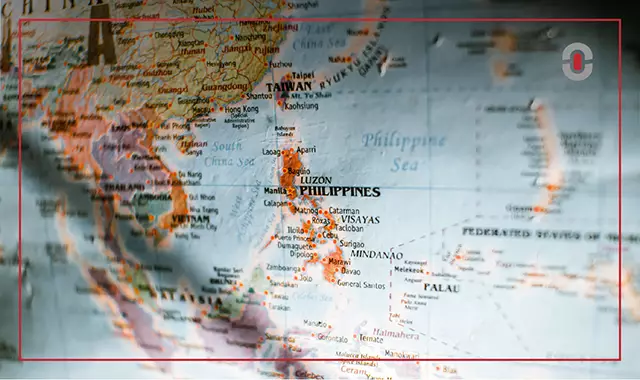Have you ever heard of “taglish”? It is a hybrid form of communication that blends Tagalog and English, commonly spoken in urban areas of the Philippines. It involves mixing words, phrases, or even sentences from both languages within a conversation. This linguistic phenomenon reflects the bilingual nature of many Filipinos, especially in Metro Manila and other highly urbanized regions. In this article we’ll try to discover more about the dialects of the Philippines and how to navigate through them in order to communicate more effectively.
Introduction
The Philippines is an archipelago of over 7,000 islands, and its population is around 115 million people. There are some 130 to 195 languages spoken there, depending on the method of classification. This linguistic diversity reflects not only the population number, but also the country’s rich history, blending indigenous traditions with Spanish, American, Chinese, and Malay influences. For anyone looking to communicate effectively in the Philippines, understanding cultural nuances in its various dialects is essential. Let’s find out more.
Major Dialects and Languages
While Filipino (based on Tagalog) and English are the official languages in the country, regional languages such as Cebuano, Ilocano, Hiligaynon, Waray, and Bicolano are widely spoken as well. Each of them has distinct vocabulary, pronunciation, and grammatical structures.
- Tagalog/Filipino – Predominantly spoken in Luzon, particularly in Metro Manila and surrounding provinces.
- Cebuano (Bisaya) – The most spoken language in the Visayas and Mindanao regions.
- Ilocano – Common in Northern Luzon.
- Hiligaynon (Ilonggo) – Spoken mainly in Western Visayas.
- Waray-Waray – Used in Eastern Visayas.
- Bicolano – Found in the Bicol region.
A common misconception is that Filipino languages are simply dialects of a single language. In fact, many Filipino languages are mutually unintelligible, making them distinct languages rather than mere dialects. In spite of that, the term “dialect” is still widely used in informal discussions.
Cultural Nuances in Communication
1. Respect and Formality
Filipino culture places a strong emphasis on respect, which is reflected in the language. The use of po and opo in Tagalog conveys politeness, particularly when speaking to elders or superiors. Similarly, in Cebuano, the term ginoo (sir) or ginang (madam) is used in formal settings.
2. Indirectness and Euphemisms
Filipinos often use indirect language to avoid confrontation or causing offense. Instead of outright saying “no,” people may respond with tingnan natin (let’s see) or baka pwede (maybe possible), which may not always indicate agreement. This practice, rooted in the cultural value of hiya (shame or social harmony), ensures that relationships remain intact.
3. Use of Honorifics and Titles
Titles such as kuya (older brother), ate (older sister), manong (older man), and manang (older woman) are used even for non-relatives to show respect. Addressing someone without a proper title in certain regions may be considered rude.
4. Humor and Expressions
Humor is an essential part of Filipino communication. Many dialects have idiomatic expressions that reflect local humor. For example:
- In Ilocano, Agsursurot ti aldaw (The sun follows you) is a poetic way of saying it’s getting late.
- In Bisaya, Wala koy labot (I have no involvement) is a casual way to say “It’s not my problem.”
5. Nonverbal Communication
Nonverbal cues are just as important as spoken words. Filipinos use:
- Lip-pointing – Instead of using their fingers, many Filipinos point using their lips.
- Eyebrow raising – A quick raise of the eyebrows can mean “yes” or acknowledgment.
- Smiling and laughing – Often used to diffuse tension, even in serious situations.
Regional Variations and Cultural Identity
1. Luzon: The Formal and Reserved Approach
- Tagalog speakers, especially in Metro Manila, tend to be more formal in speech.
- Ilocanos are known for being reserved and economical with words, which reflects their reputation for being thrifty.
2. Visayas: The Direct and Expressive Style
- Cebuanos are more direct compared to Tagalog speakers, often expressing their thoughts bluntly.
- Hiligaynon speakers, particularly Ilonggos, are known for their melodious and soft way of speaking, which makes even criticisms sound less harsh.
3. Mindanao: The Multicultural Blend
- Mindanao is a home to a mix of Cebuano, Chavacano (Spanish creole), and indigenous languages.
- The presence of Muslim communities in Mindanao also influences linguistic expressions with Arabic borrowings.
Cultural Context in Filipino Communication – Key Cultural Values
- Hiya (Sense of Shame or Social Harmony) – The concept of hiya is a crucial aspect of Filipino interpersonal interactions. It refers to a sense of propriety and social decorum, where individuals avoid causing embarrassment to themselves or others.
- Pakikisama (Social Acceptance and Group Harmony) – Filipinos highly value maintaining good relationships and avoiding conflict within a group.
- Utang na Loob (Reciprocity and Gratitude) – it refers to a deep sense of indebtedness and gratitude.
- Respect for Authority and Elders – Filipino culture has a strong hierarchical structure, with respect for elders and authority figures being a key value.
Strategies for Effective Communication and Navigation through Filipino Dialects
1. Learn Basic Local Phrases
Even if Filipino and English are widely spoken, learning key phrases in the local dialect can help build rapport. Simple greetings such as:
- Maayong buntag (Good morning) in Cebuano
- Naimbag a bigat (Good morning) in Ilocano
- Maray na aga (Good morning) in Bicolano
can leave a positive impression.
2. Adapt to Local Communication Styles
Being aware of the level of formality in different regions helps in avoiding misunderstandings. For example:
- In Manila, it is common to say salamat po (thank you, with respect).
- In Cebu, salamat (thank you) is used without needing po.
3. Observe Nonverbal Cues and Understand Contextual Meanings
Certain words or phrases might mean different things depending on the region. For example, in Cebuano, libang means “to entertain oneself,” but in Tagalog, it means “to defecate.” This highlights the importance of understanding contextual meanings. Also, since Filipinos often use body language in communication, paying attention to these cues can provide additional context to conversations.
The Future of Dialect-Sensitive Communication
AI-powered translation and speech recognition tools are improving, making it easier to communicate across different dialects. However, many Filipino dialects remain underrepresented in AI models. The future will likely see greater investment in linguistic research to improve AI’s ability to process and translate regional languages. Also, social media platforms are becoming powerful tools for dialect preservation and communication. The rise of dialect-based content (e.g., Cebuano YouTube channels, Hiligaynon TikTok videos) is expected to continue, encouraging a greater appreciation for linguistic diversity. Apps like Duolingo, Google Translate, and language-learning platforms may expand their offers to include more Filipino dialects. Future developments could include interactive learning modules that teach dialects alongside Filipino and English.
You want to connect more deeply with your Filipino audience? Start by learning the language of their heart and culture—explore our localization services today!
Conclusion
Effective communication in the Philippines goes beyond just learning the language—it requires an appreciation of cultural nuances. Each Filipino dialect carries its own identity, values, and traditions, making the country’s linguistic landscape both complex and fascinating. By understanding these nuances, people can navigate social interactions with greater ease, cultivate deeper connections, and show genuine respect for the country’s diverse cultural heritage.

